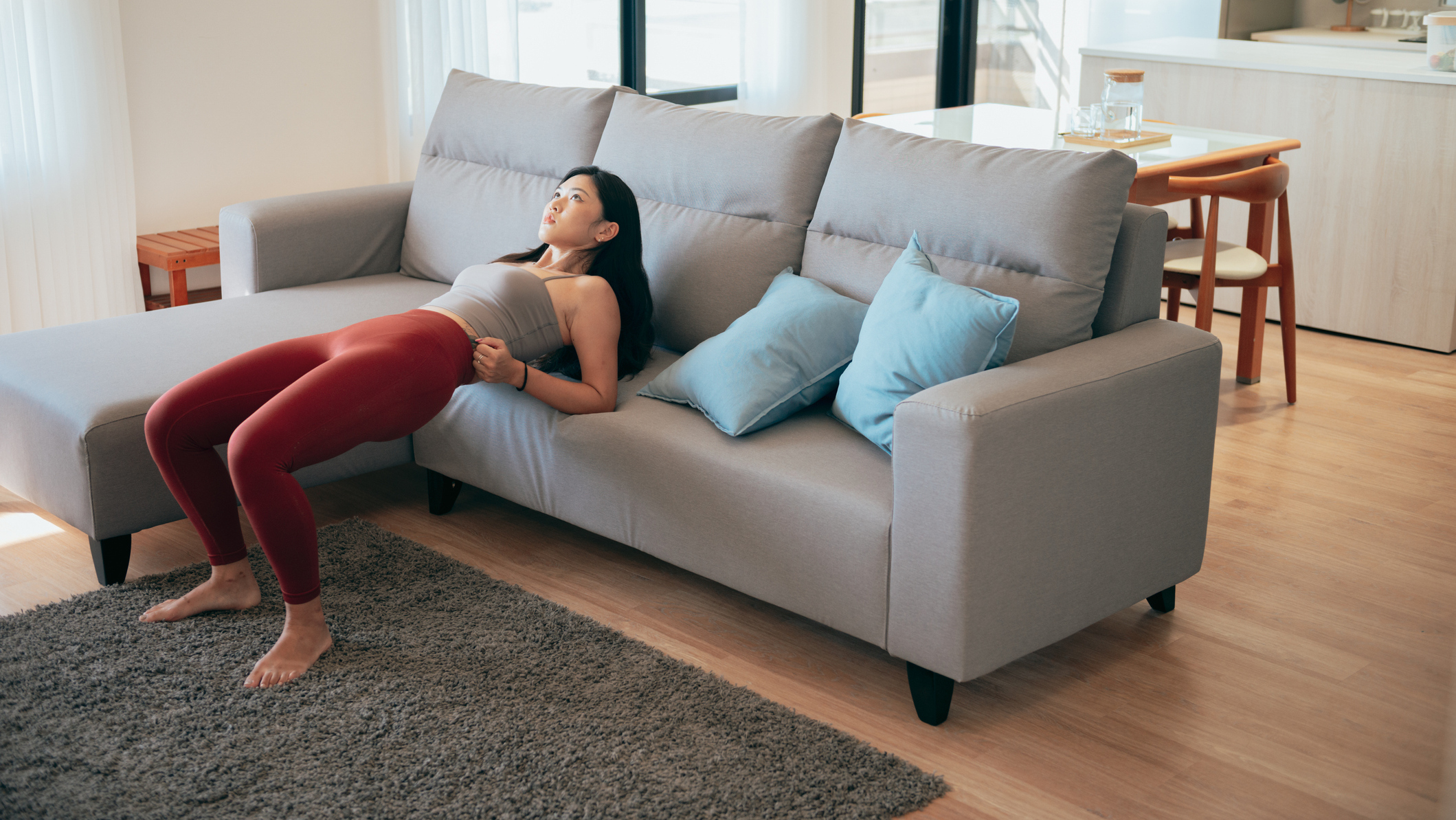
If your knees get sore, especially when you walk or run, you could benefit from working on your strength and stability. Often knee problems are caused by improper alignment at the knee, which can be caused by weaknesses in other areas of the body. That’s why strengthening the surrounding muscles can help the mechanics of movement at the knee.
This knee-strengthening workout was developed by physical therapist Dr Chloe Costigan of Mobility-Doc. "The quads, hamstrings, calf, glutes and adductor are the muscles that most directly influence the function of the knee," says Costigan, "but the muscles of the hip and the ankle are really strong influencers of how the knee moves."
"When we think about knee strengthening often we think of strengthening the quad," says Costigan in her YouTube video. "But frequently the knee bears the brunt of the issues relating to the hip. These four exercises are going to strengthen everything around the hip to help with your mechanics at your knee. To have strong knees, we have to have strong hips."
How to do this knee-strengthening workout
Of the four exercises recommended by Costigan, two are activation exercises that isolate a single muscle. First, you'll be targeting the gluteus medius (glute med) and then the gluteus maximus (glute max), two muscles in your buttocks that are crucial for proper alignment and body mechanics. "Then we're going to do two compound exercises, which will incorporate movement in the hip and the knee," says Costigan. "These exercises are going to improve how you move, teaching your body how to find stability from your hip, so you're not putting too much stress on your knee."
"I like to do these as a circuit,” says Costigan. “It gives you a chance to refine that movement and each exercise prepares your body for the next one."
Perform three rounds of these four exercises. "Do this routine three to five times a week and you will see a difference in your stability and strength within three or four weeks," says Costigan.
1. Side-leg lift
Reps: 10 on each side
This exercise will isolate and activate the glute med muscle. "The glute med is really important for positioning where your knee is underneath your hip," says Costigan. “When I take a step onto my right leg, my right glute med has to fire because if it doesn't, or if it's weak, that left side of my pelvis drops and then my right knee caves in and I'll have excess force on that inside part of my knee."
2. Hip thrust
Reps: 10
Strengthening the glute max helps take the pressure off the quads, which is beneficial because overusing the quads can cause knee pain. The glutes also help propel you forward.
"The glute max helps to stabilize your knee—it controls the position of your hip and therefore your knee when you make contact with the ground," says Costigan. "But it also helps offset some of the excess use of the quad on the knee. During the propulsion phase of walking when your hip is in extension, and your leg is behind you, you need to use your glute max. That's what allows you to get that full posterior chain activation."
3. Modified single-leg Romanian deadlift
Reps: 5 on each side
This compound exercise requires balance and control to keep your hips level as you hinge forward while standing on one leg. It will get all the muscles in your leg firing, building strength and stability. "This movement helps to connect knee and hip stability and strength," says Costigan.
4. Single-leg eccentric chair squat
Reps: 5 on each side
The exercise name is a long-winded way of describing sitting down in a chair and standing up using only one leg. By ensuring your knee stays in the correct position throughout this move, you can work on your mechanics. "This is really important for improving knee and hip stability and strength, plus it helps teach your brain what position your knee should be in," says Costigan.







